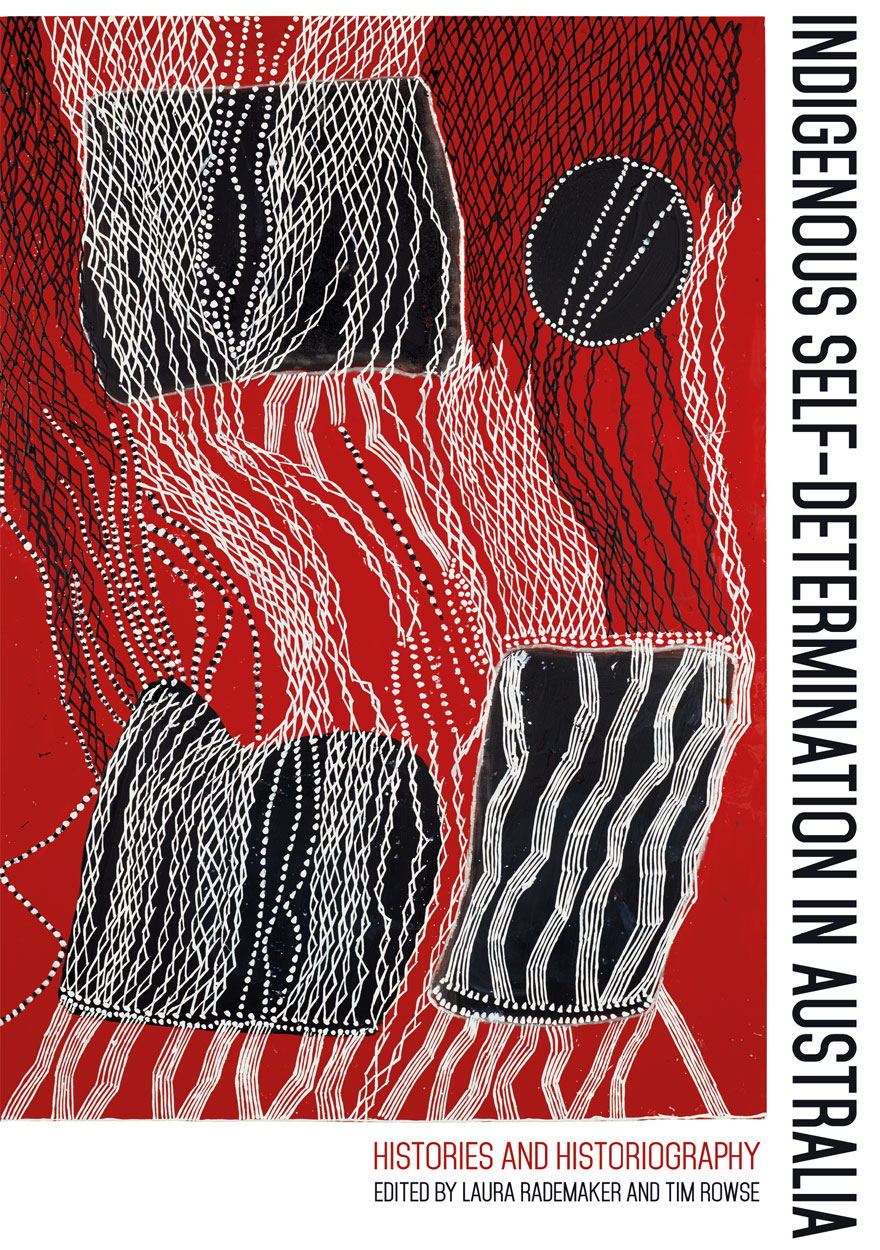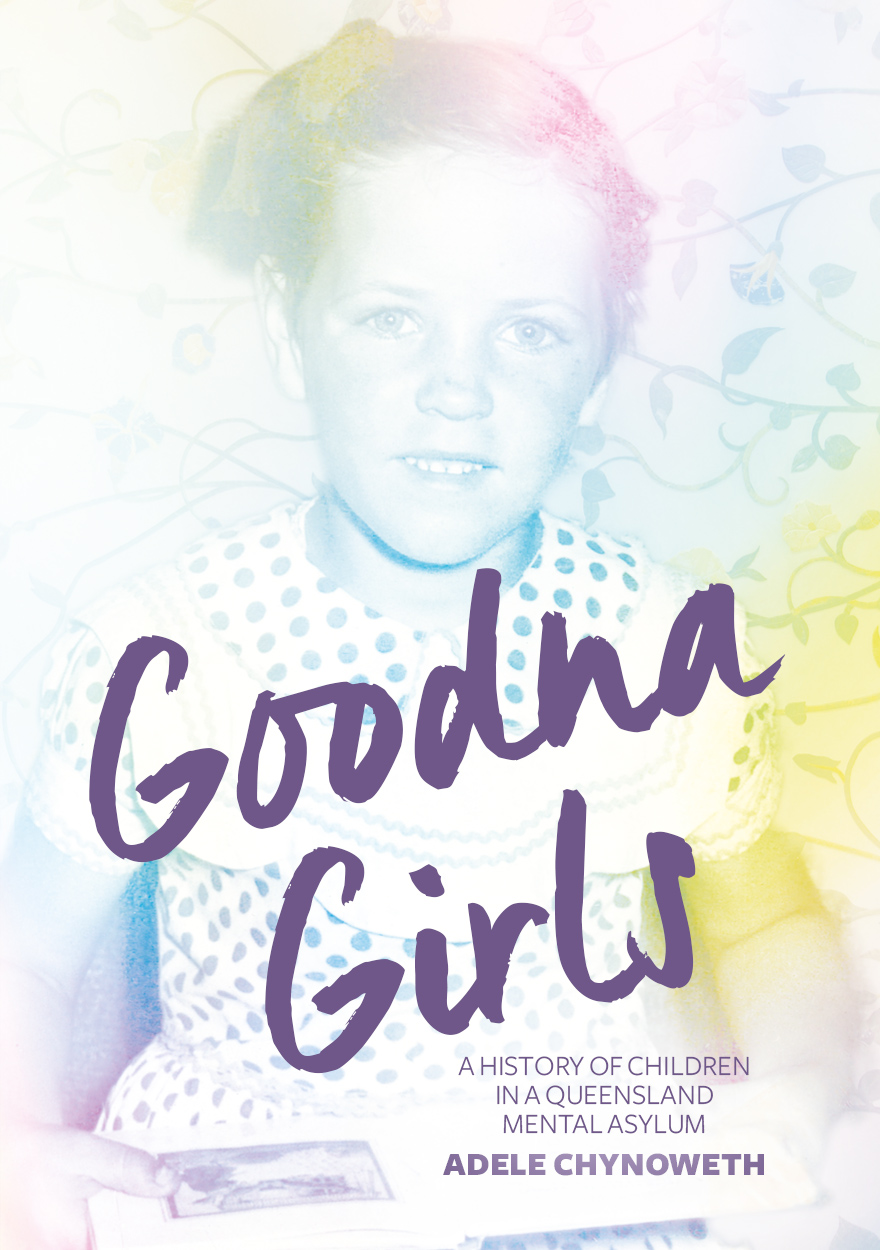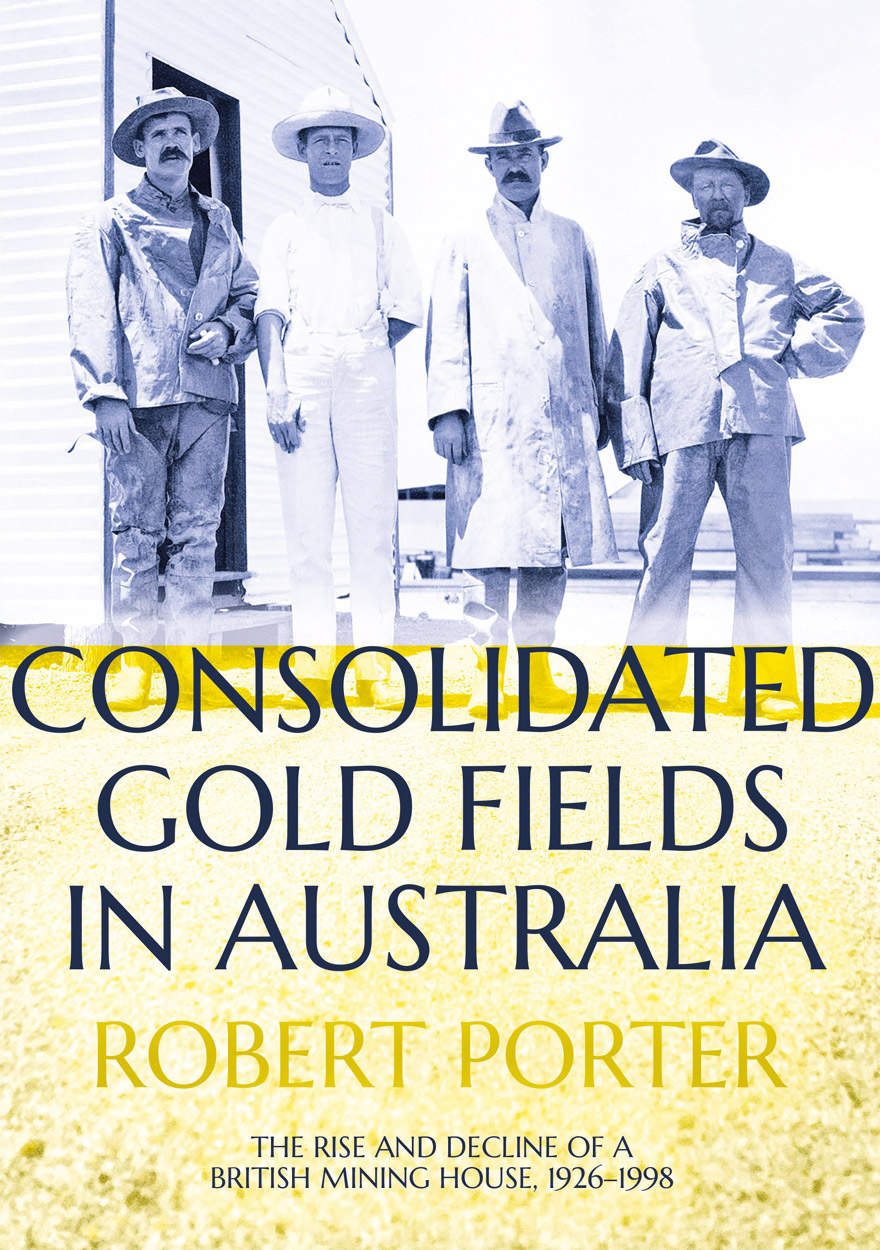Search titles
Displaying results 81 to 90 of 370.

The Bible in Buffalo Country »
Oenpelli Mission 1925–1931
Publication date: October 2020
Arriving in the remote Arnhem Land Aboriginal settlement of Oenpelli (Gunbalanya) in 1925, Alf and Mary Dyer aimed to bring Christ to a former buffalo shooting camp and an Aboriginal population many whites considered difficult to control. The Bible in Buffalo Country: Oenpelli Mission 1925–1931 represents a snapshot of the tumultuous first six years of the Church Missionary Society’s mission at Oenpelli and the superintendency of Alfred Dyer between 1925 and 1931. Drawing together documentary and photographic sources with local community memory, a story emerges of miscommunication, sickness, constant logistical issues, and an Aboriginal community choosing when and how to engage with the newcomers to their land.
This book provides a fascinating and detailed record of the primary sources of the mission, placed alongside the interpretation and insight of local Traditional Owners. Its contents include the historical and archaeological context of the primary source material, the vivid mission reports and correspondence, along with stunning photographs of the mission and relevant maps, and finally the oral history of Esther Manakgu, presenting Aboriginal memory of this complex era.
The Bible in Buffalo Country emerged from community desire for access to the source documents of their own history and for their story to be known by the broader Australian public. It is intended for the benefit of communities in western Arnhem Land and is also a rich resource for historians of Aboriginal history (and other scholars in relevant disciplines).

Indigenous Self-Determination in Australia »
Histories and Historiography
Edited by: Laura Rademaker, Tim Rowse
Publication date: September 2020
Histories of the colonisation of Australia have recognised distinct periods or eras in the colonial relationship: ‘protection’ and ‘assimilation’. It is widely understood that, in 1973, the Whitlam Government initiated a new policy era: ‘self-determination’. Yet, the defining features of this era, as well as how, why and when it ended, are far from clear. In this collection we ask: how shall we write the history of self-determination? How should we bring together, in the one narrative, innovations in public policy and Aboriginal and Torres Strait Islander initiatives? How (dis)continuous has ‘self-determination’ been with ‘assimilation’ or with what came after? Among the contributions to this book there are different views about whether Australia is still practising ‘self-determination’ and even whether it ever did or could.
This book covers domains of government policy and Indigenous agency including local government, education, land rights, the outstation movement, international law, foreign policy, capital programs, health, public administration, mission policies and the policing of identity. Each of the contributors is a specialist in his/her topic. Few of the contributors would call themselves ‘historians’, but each has met the challenge to consider Australia’s recent past as an era animated by ideas and practices of Indigenous self-determination.

Forts and Fortification in Wallacea »
Archaeological and Ethnohistoric Investigations
Publication date: September 2020
‘This volume presents ground-breaking research on fortified sites in three parts of Wallacea by a highly regarded group of scholars from Australia, Europe, Southeast Asia and the United States. In addition to surveying and dating defensive sites in often remote and difficult terrain, the chapters provide an important and scholarly set of archaeological and ethnohistoric studies that investigate the origin of forts in Wallacea. Socio-political instability from climate events, the materialisation of indigenous belief systems, and the substantial impact of imperial expansion and European colonialism are examined and comprise a significant addition to our knowledge of conflict and warfare in an under-studied part of the Indo-Pacific. The archaeological record for past conflict is frequently ambiguous and the contribution of warfare to social development is mired in debate and paradox. Authors demonstrate that forts and other defensive constructions are costly and complicated structures that, while designed and built to protect a community from a threat of imminent violence, had (and have) complicated life histories as a result of their architectural permanence, strategic locations and traditional cultural and political significance. Understanding why conflict outbreaks – like human colonisation – often appear in the past as a punctuated event can best be approached through long-term records of conflict and violence involving archaeology and allied historical disciplines, as has been successfully done here. The volume is essential reading for archaeologists, cultural heritage managers and those with an interest in conflict studies.’
— Professor Geoffrey Clark, College of Asia and the Pacific, The Australian National University, Canberra.

Goodna Girls »
A History of Children in a Queensland Mental Asylum
Authored by: Adele Chynoweth
Publication date: September 2020
Goodna Girls tells the story of children incarcerated in Wolston Park Hospital, an adult psychiatric facility in Queensland, Australia. It contains the personal testimonies of women who relate—in their own no-holds-barred style and often with irreverent humour—how they, as children, ended up in Wolston Park and how this affected their adult lives. The accounts of hospital staff who witnessed the effects of this heinous policy and spoke out are also included.
The book examines the consequences of the Queensland Government’s manipulation of a medical model to respond to ‘juvenile delinquents’, many of whom were simply vulnerable children absconding from abusive conditions. As Australia faces the repercussions of the institutionalisation of its children in the twentieth century, brought about through a series of government inquiries, Goodna Girls makes a vital contribution to the public history of the Stolen Generations, Former Child Migrants and Forgotten Australians.
Goodna Girls presents the research that informed a successful, collective campaign to lobby the Queensland Government to make long overdue and much-needed reparations to a group of courageous survivors. It holds contemporary resonance for scholars, policymakers and practitioners in the fields of public history, welfare, child protection, education, nursing, sociology, medicine and criminology.

Bridging Australia and Japan: Volume 2 »
The writings of David Sissons, historian and political scientist
Edited by: Keiko Tamura, Arthur Stockwin
Publication date: August 2020
This book is volume two of the writings of David Sissons, who first established his academic career as a political scientist specialising in Japanese politics, and later shifted his focus to the history of Australia–Japan relations. In this volume, we reproduce his writings on Japanese politics, the Pacific War and Australian war crimes trials after the war. He was a pioneer in these fields, carrying out research across cultural and language borders, and influenced numerous researchers who followed in his footsteps. Much of what he wrote, however, remained unpublished at the time of his death in 2006, and so the editors have included a selection of his hitherto unpublished work along with some of his published writings.
Breaking Japanese Diplomatic Codes, edited by Desmond Ball and Keiko Tamura, was published in 2013, and the first volume of Bridging Australia and Japan was published in 2016. This book completes this series, which reproduces many of David Sissons’ writings. The current volume covers a wide range of topics, from Japanese wartime intentions towards Australia, the Cowra Breakout, and Sissons’ early writings on Japanese politics. Republished in this volume is his comprehensive essay on the Australian war crimes trials, which influenced the field of military justice research. Georgina Fitzpatrick and Keiko Tamura have also contributed essays reflecting on his research.
Sissons was an extraordinarily meticulous researcher, leaving no stone unturned in his search for accuracy and completeness of understanding, and should be considered one of Australia’s major historians. His writings deal not only with diplomatic negotiations and decision-making, but also the lives of ordinary and often nameless people and their engagements with their host society. His warm humanity in recording ordinary people’s lives as well as his balanced examination of historical incidents and issues from both Australian and Japanese perspectives are hallmarks of his scholarship.

International Review of Environmental History: Volume 6, Issue 1, 2020 »
Edited by: James Beattie
Publication date: May 2020
International Review of Environmental History takes an interdisciplinary and global approach to environmental history. It encourages scholars to think big and to tackle the challenges of writing environmental histories across different methodologies, nations, and time-scales. The journal embraces interdisciplinary, comparative and transnational methods, while still recognising the importance of locality in understanding these global processes.
The journal's goal is to be read across disciplines, not just within history. It publishes on all thematic and geographic topics of environmental history, but especially encourage articles with perspectives focused on or developed from the southern hemisphere and the ‘global south’.
Download for free
Not available for purchase

People and Place »
The West Coast of New Zealand’s South Island in History and Literature
Authored by: Len Richardson
Publication date: May 2020
This book traces the enduring relationship between history, people and place that has shaped the character of a single region in a manner perhaps unique within the New Zealand experience. It explores the evolution of a distinctive regional literature that both shaped and was shaped by the physical and historical environment that inspired it. Looking westwards towards Australia and long shut off within New Zealand by the South Island’s rugged Southern Alps, the West Coast was a land of gold, coal and timber. In the 1950s and 1960s, it nurtured a literature that embodied a sense of belonging to an Australasian world and captured the aspirations of New Zealand’s emergent radical nationalism. More recent West Coast writers, observing the hollowing out of their communities, saw in miniature and in advance the growing gulf between city and regional economies aligned to an older economic order losing its relevance. Were they chronicling the last hurrah of a retreating age or crafting a literature of regional resistance?

Consolidated Gold Fields in Australia »
The Rise and Decline of a British Mining House, 1926–1998
Authored by: Robert Porter
Publication date: April 2020
Consolidated Gold Fields was a major British mining house founded by Cecil Rhodes in 1892. Diversifying from its South African gold interests, the company invested widely during the following century. This included investments in the Western Australian gold sector from the 1920s and exploration and mining activities elsewhere in Australia and the Territory of New Guinea. In the 1960s, Consolidated Gold Fields Australia (CGFA) was formed.
CGFA had ambitious plans and the financial backing from London to establish itself as one of the main diversified mining companies in Australia. Investments were held in the historic Mount Lyell Mining and Railway Company, in Renison, and it was one of the first groups to develop iron ore deposits in the Pilbara of Western Australia. It also acquired a major interest in mineral sands.
While the London-based Consolidated Gold Fields ceased to exist in 1989, taken over and dismembered by renowned corporate raider Hanson Plc, its Australian subsidiary, renamed Renison Goldfields Consolidated (RGC), continued for another nine years as a diversified mining group before it suffered its own corporate demise, facilitated by Hanson.
CGFA and RGC were important participants in Australia’s post–World War II mining sector. This book is a history of a once great British mining-finance house and its investments in Australia. Consolidated Gold Fields had a rich and broad history in Australia; its ultimate fate did not demonstrate its potential as an Australian mining company.

Australian Journal of Biography and History: No. 3, 2020 »
Publication date: April 2020
The articles in this issue of the Australian Journal of Biography and History consider subjects who have lived across and between national and internal Australian boundaries, and the authors have thus been compelled to address the methodological and theoretical problems of mobility. Kate Bagnall addresses the seemingly insurmountable problem of writing about Chinese women who settled in Australia in the second half of the twentieth century. Contrasting with the dearth of information on Chinese women immigrants to colonial New South Wales, Jackie Dickenson’s chapter on Hong Kong–based merchant and trader Melbourne-born Elma Kelly (1895–1974) benefits from an abundance of documentation, both in the realm of the personal and official. In her article on the Corney family in the aftermath of World War I, Alexandra McKinnon considers the record of loss and sorrow preserved in the archives of the Australian War Memorial. Very different methodological questions are explored by Suzanne Robinson in her reflections on writing a biography of the Australian composer Peggy Glanville-Hicks (1912–90). As a feminist biographer, Robinson had to face a most ‘troublesome question’ of whether her subject’s considerable imperfections, which became evident during research, risked undermining her status as a composer, particularly one whose reputation was yet to be fully established.
A different form of methodological question is posed by Pat Buckridge in his article on three generations of Macdougall men, each of whom became journalists—Dugald (1833–79), who also excelled in business and politics, Dugald the younger (1872–1947), and James (1903–95). The question Buckridge considers is whether his subjects can ‘usefully be considered as a grouped biographical entity signifying more than the sum of its parts, which is to say more than the three separate lives’. By contrast, Peter Crabb’s article on the colonial goldfields reporter John Augustus Hux (1826–64) relates the story of a single figure who, having made connections in his English homeland that would serve him well in Australia, provided eyewitness accounts of a number of significant goldfields in New South Wales, which were widely read in the colony and thus helped to form popular images of the industry. Finally, in a departure from the theme of mobility characterising the other contributions, Nichola Garvey documents her experiences of working with the Western Australian iron ore magnate Andrew Forrest to research and write his biography. In what was conceived by both the author and the subject as an ‘authorised biography’, Garvey’s article raises some fundamental questions about biographical writing of living persons, including the utility and pitfalls of what she calls ‘expressivist anthropology’, as well as the scope of authorisation in biographical writing.
Download for free
Not available for purchase

Roars from the Mountain »
Colonial Management of the 1951 Volcanic Disaster at Mount Lamington
Authored by: R. Wally Johnson
Publication date: April 2020
Mount Lamington broke out in violent eruption on 21 January 1951, killing thousands of Orokaiva people, devastating villages and destroying infrastructure. Generations of Orokaiva people had lived on the rich volcanic soils of Mount Lamington, apparently unaware of the deadly volcanic threat that lay dormant beneath them. Also unaware were the Europeans who administered the Territory of Papua and New Guinea at the time of the eruption, and who were uncertain about how to interpret the increasing volcanic unrest on the mountain in the preceding days of the disaster.
Roars from the Mountain seeks to address why so many people died at Mount Lamington by examining the large amount of published and unpublished records that are available on the 1951 disaster. The information sources also include the results of interviews with survivors and with people who were part of the relief, recovery and remembrance phases of what can still be regarded as one of Australia’s greatest natural-hazard disasters.



